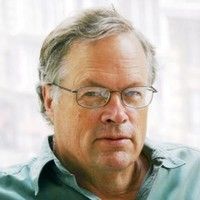The United States and much of the world are plagued by what we call killer intersections – intersections that are dominated by cars and hostile to people, intersections that "kill" any semblance of social or commercial life in their vicinity, intersections that create a high-risk environment for human beings.
These intersections can be found everywhere. Many are so large and overwhelming that it can seem hopeless to imagine a world without them. They can feel like a permanent fixture of our modern lives about which we can do nothing. But that's not true.

Campus Martius in the late 90s: Just a monument surrounded by cars
There have been very few intersection renewal projects that have demonstrated how these killer intersections can be transformed and how the results breathe new life into a community. Detroit is one of the most notable examples. From the desolate car-centric wasteland above, the central square of Campus Martius was transformed into the vibrant, thriving destination below.
What's more, it was recently awarded the best square in the United States by USA Today.
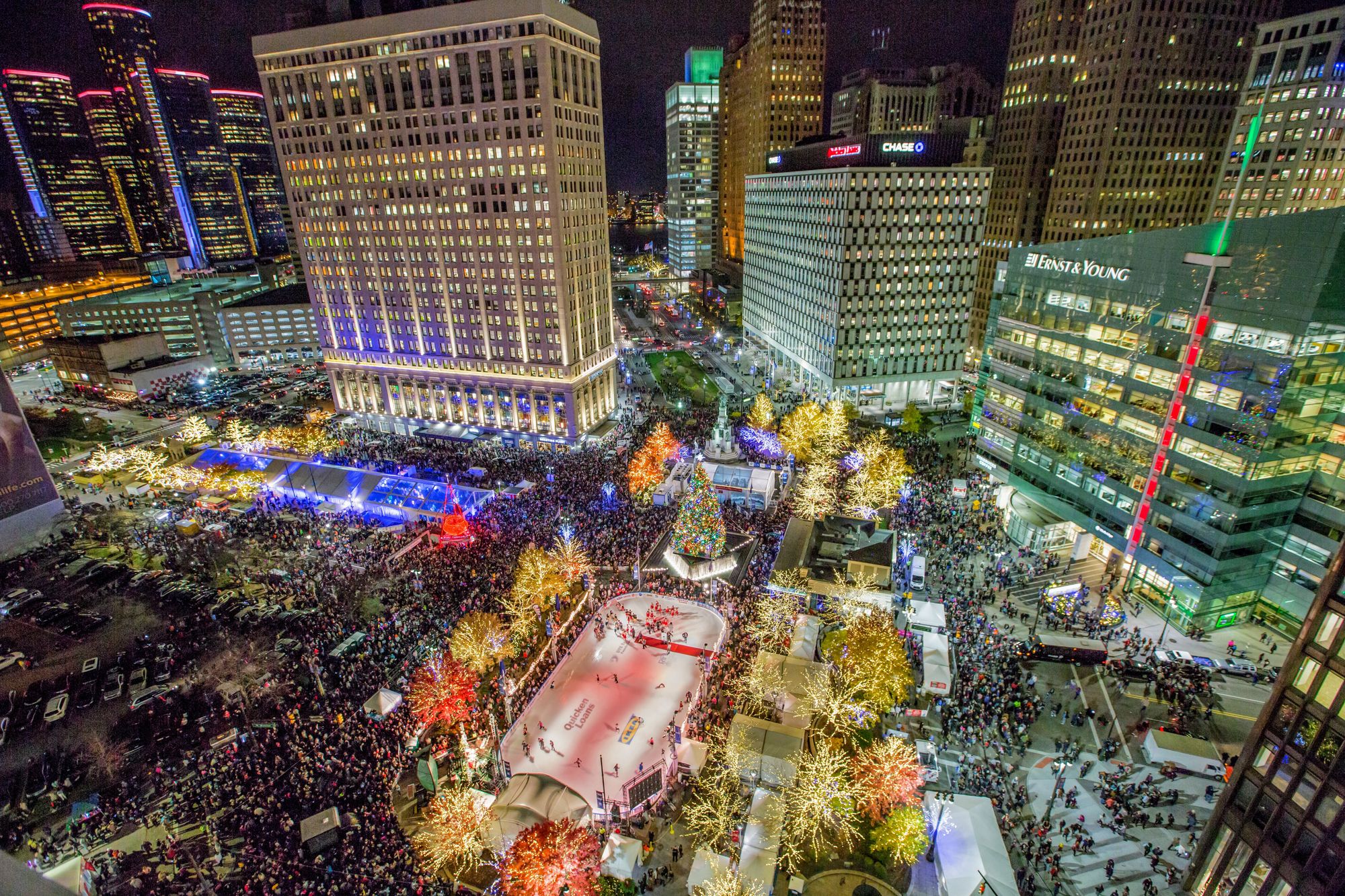
As its own residents, like award-winning poet Frankie McIntosh will proudly tell you, this once hostile intersection is now the heart of the city.
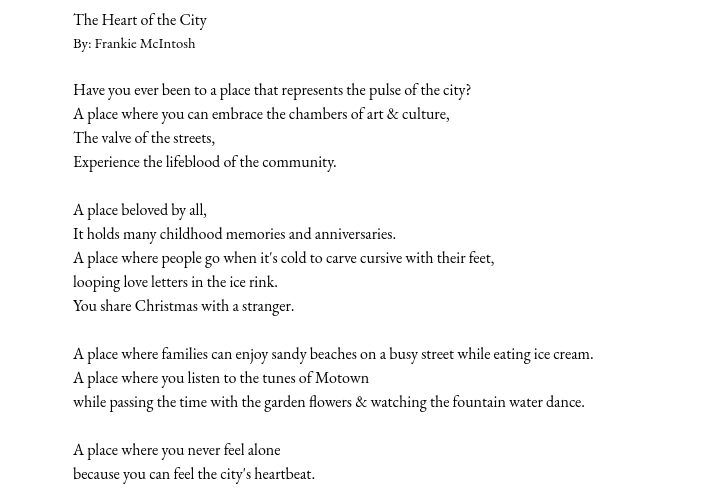

Frankie McIntosh is the visionary founder of Mifullness Poetry, a program promoting mental wellness through poetry in Flint, MI. She also instructs poetry for Youth Arts Unlock and co-curated the "Poet For Hire" street poetry activation. She is an active participant in #PlacemakingFlint and PlacemakingUS, contributing in many ways to the movement.
These intersection transformations show us what a better future can look like if we choose to take back precious space from cars and return it to people. In this series of posts, we will explore amazing intersection transformations so that they can inspire future ones.
Campus Martius
In the late 19th century and early 20th, Campus Martius was a local center point for retail and transportation. It was full of trolleys and pedestrians, businesses and life. However, with the advent of car culture, that life gradually drained. More and more space was carved away from people and transit and handed over to lanes for cars. Countless buildings were left vacant and blighted, and empty storefronts were found on every major avenue.
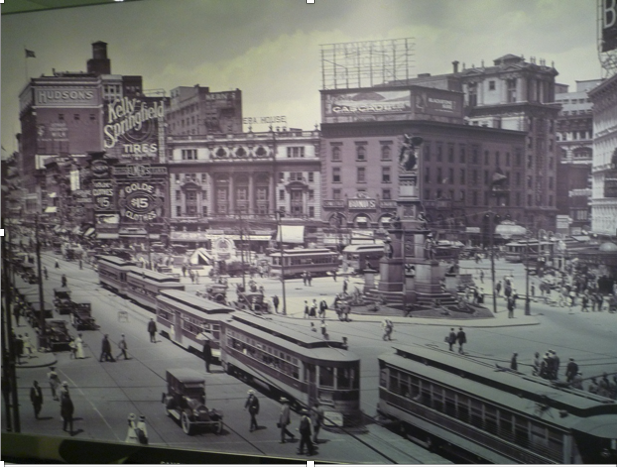
By 1999, Campus Martius had been hollowed out and given over to cars and traffic, turning the city into The Tin Man – effectively taking out its heart. Only the Soldiers and Sailors Monument at the center of the space was left behind. It took time to connect the death of this square to what had caused it – cars – but when the connection was made, a renaissance began.
Campus Martius was completely reconstructed in the early 2000s with the support of civic leaders to commemorate the 300th Anniversary of the City in a grand way. The mayor, Dennis Archer, wanted leaders to create the “best park in the world,” a brilliant goal that set into motion a bold and visionary endeavor.

When Campus Martius Park opened in 2004, it was an instant success. Led by Bob Gregory of the Detroit 300 Conservancy, there were holiday and seasonal activities like ice skating, programmed activities like movie nights, markets, music events, and outdoor yoga, alongside a restaurant, and more! People flocked to this amazing new hub of life and activity.


A place for all seasons: Campus Martius,“Detroit’s Gathering Place," become a favorite location for events, meeting up, and just hanging out.
Largely because of the success of the park, Quicken Loans (now Rocket Mortgage) under the leadership of Dan Gilbert, relocated from Detroit's suburbs to downtown in the early 2010s. Seeing the role that placemaking had played in the transformation of downtown Detroit, he supported the Detroit Downtown Partnership's plan to develop a new set of “Lighter, Quicker, Cheaper” improvements for Campus Martius Park and other public spaces throughout downtown. The revival of downtown Detroit accelerated and continues today.


Credit: Downtown Detroit Partnership
The Beach at Campus Martius
Over the course of its 2013 transformation, one surprise for everyone was a pop-up “urban” sandy beach space in Campus Martius. Sponsored by Southwest Airlines, the innovative and unexpected addition solidified this new phase for Detroit's public spaces. Once an experiment, it is now a permanent summer fixture for downtown, making waves throughout the city.
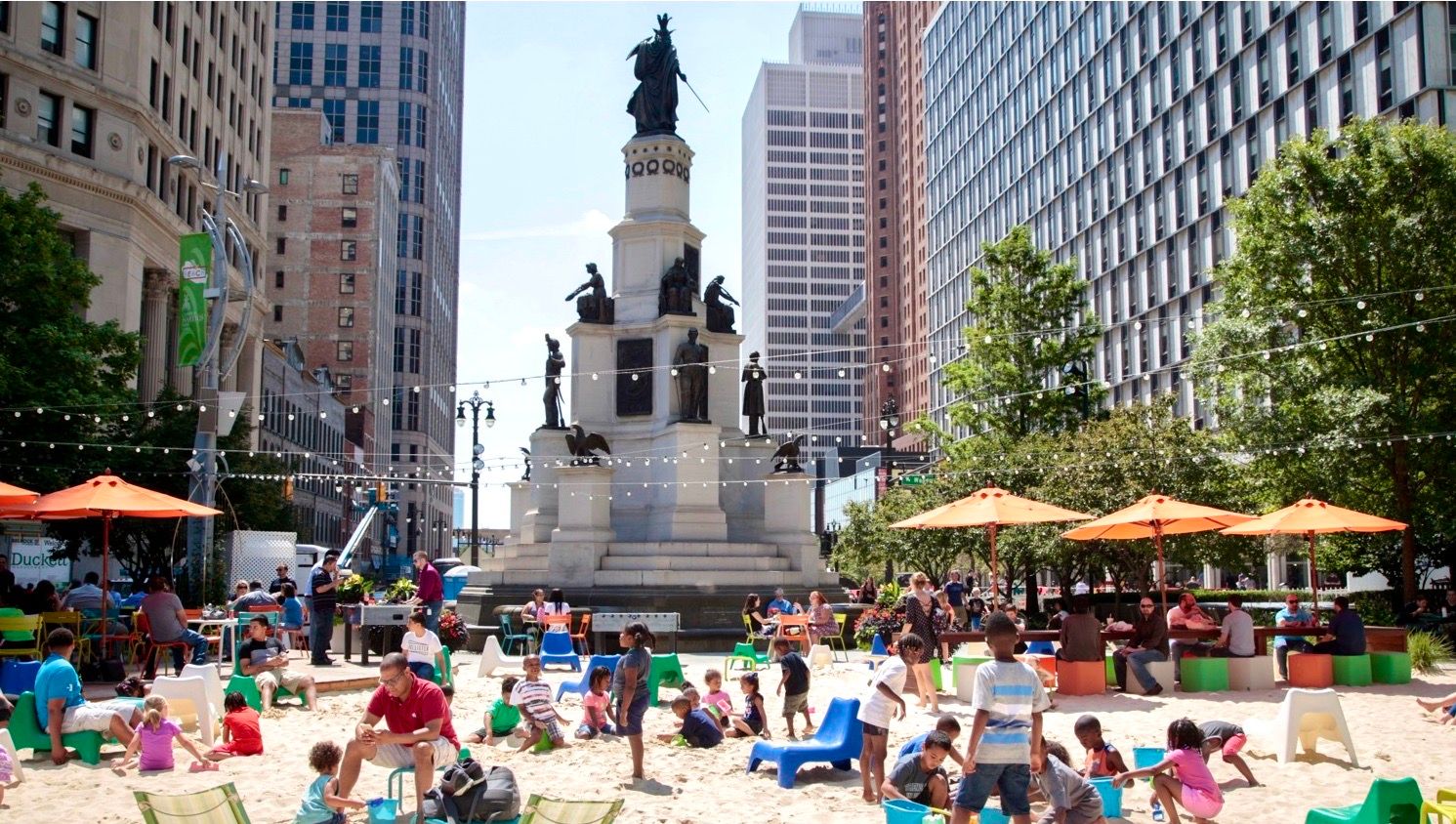
The Beach Bar anchors this new part of Campus Martius and creates a stream of revenue that supports the management of the space. It opened the same week that the City of Detroit went into bankruptcy. Continually re-imagined and upgraded over the years, the seasonal beach remains one of the most popular hangouts in the city.
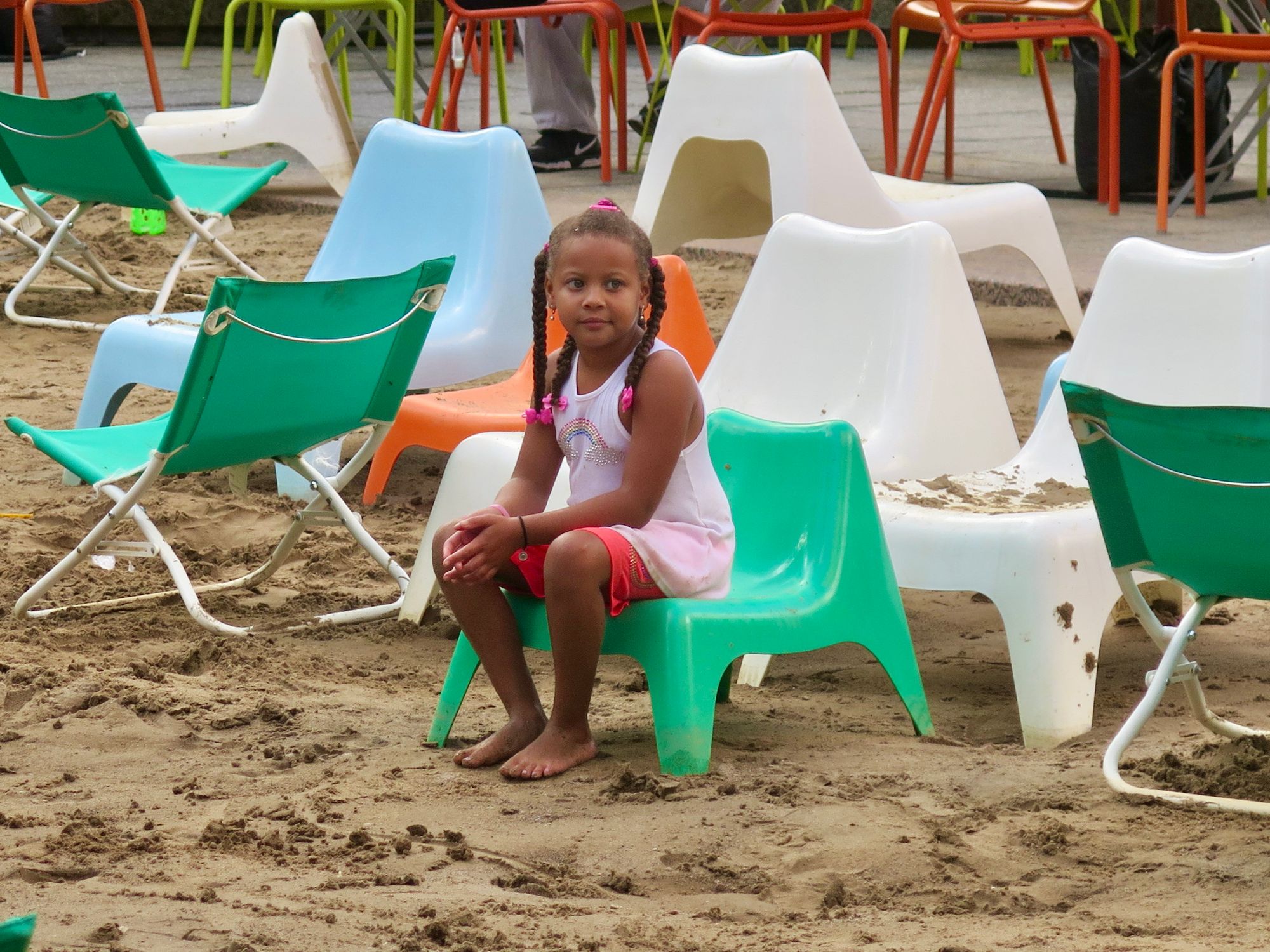


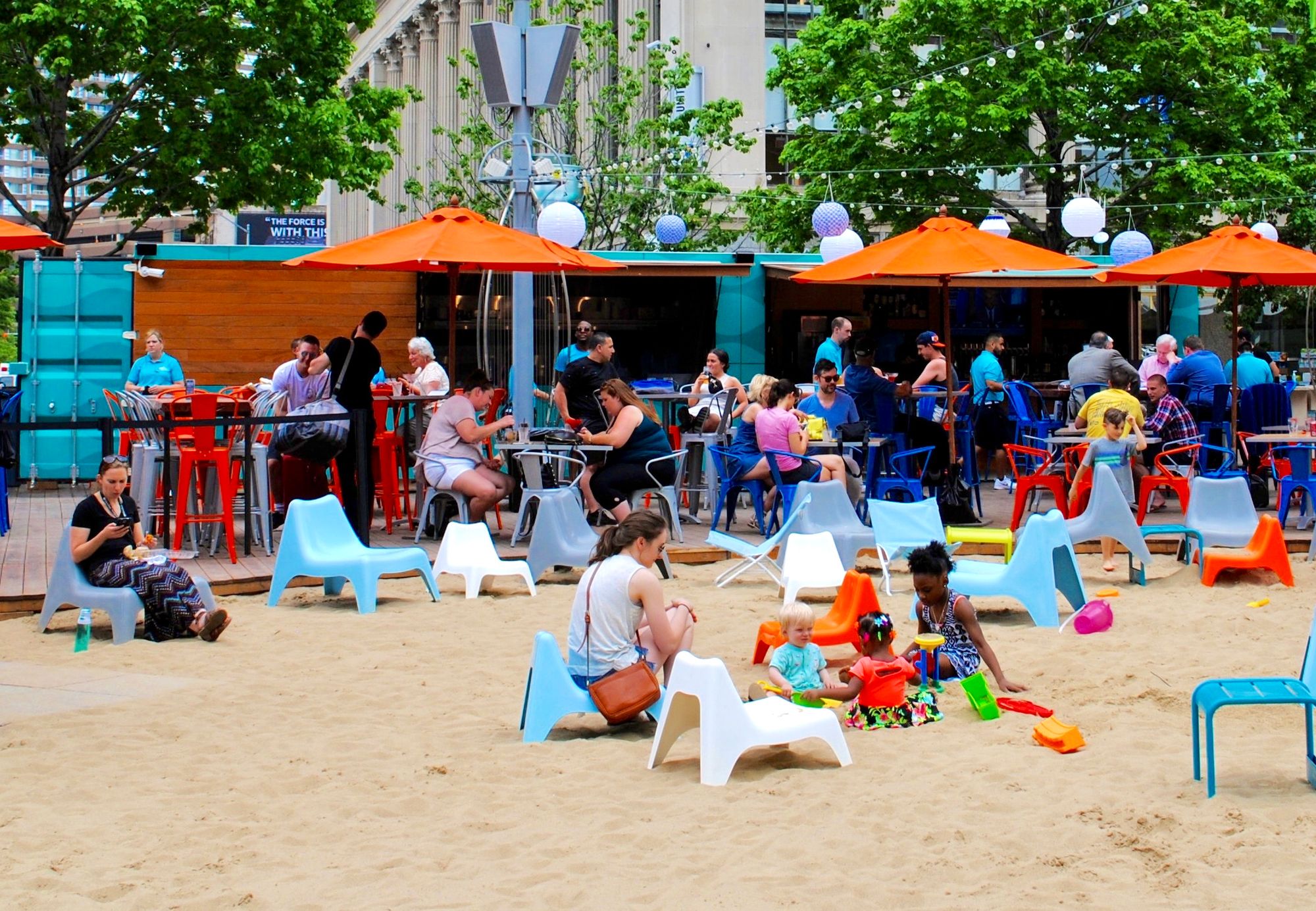
Takeaway
It is a full-circle moment when a city so famous for its fervent support of cars went on to suffer from their takeover and eventually revived its core through their removal in favor of a grand new gathering place. No place labored with such dedication to accommodate cars, and no place has paid such a steep price for it. It makes sense then that Detroit would be the city to teach us about what cars can take from us and how to bring it back. What Campus Martius has achieved represents the way forward for all cities that have become overpowered by car culture and want to break free.
We have dug ourselves deep into car culture – giving up so much of what makes us happy, safe, and comfortable in order to accommodate cars – but we can dig ourselves out. Detroit's Campus Martius is a great example of what that looks like. The answer to the trap in which we find ourselves is shifting our focus to the human experience.
Further reading:
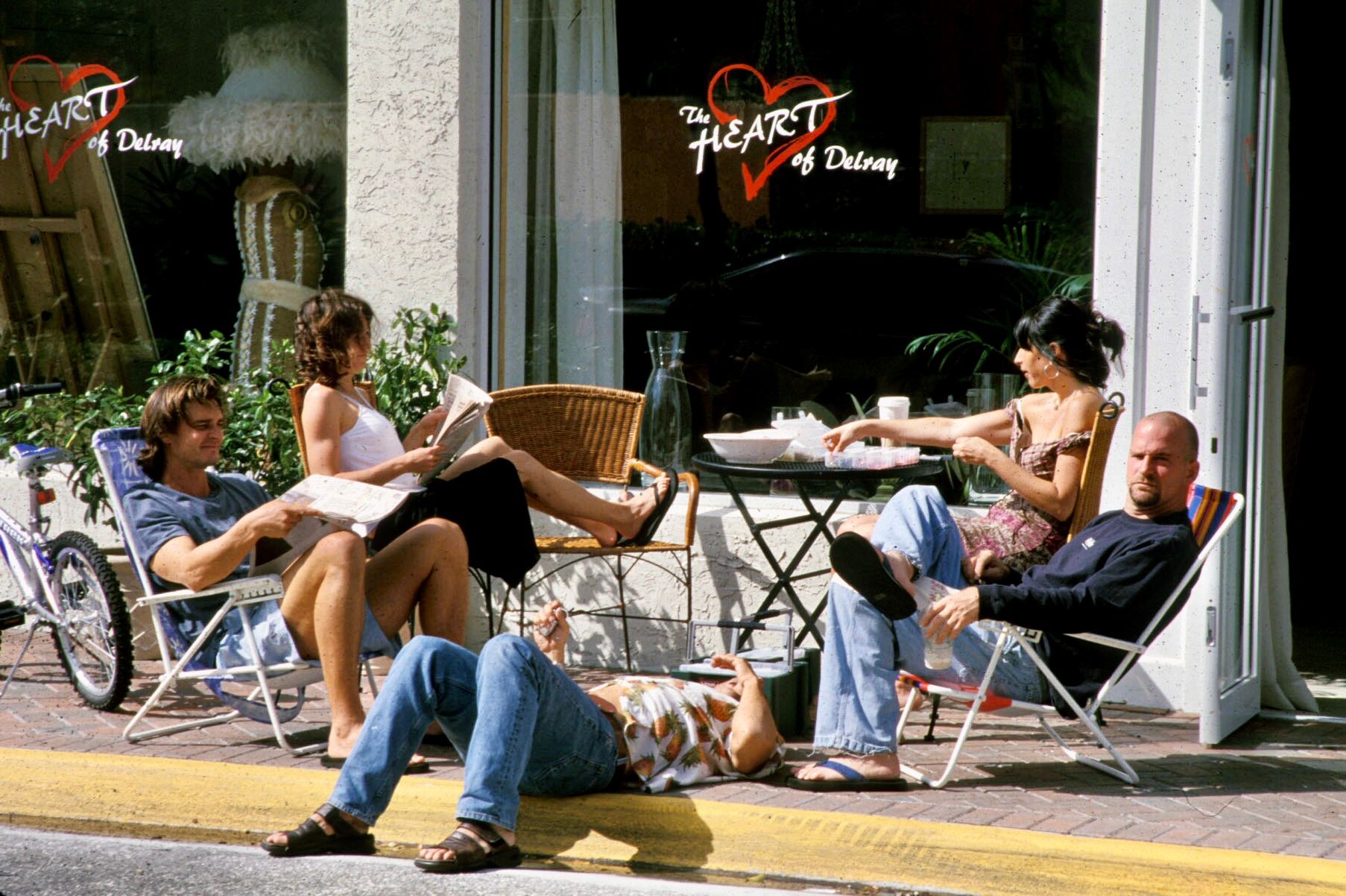
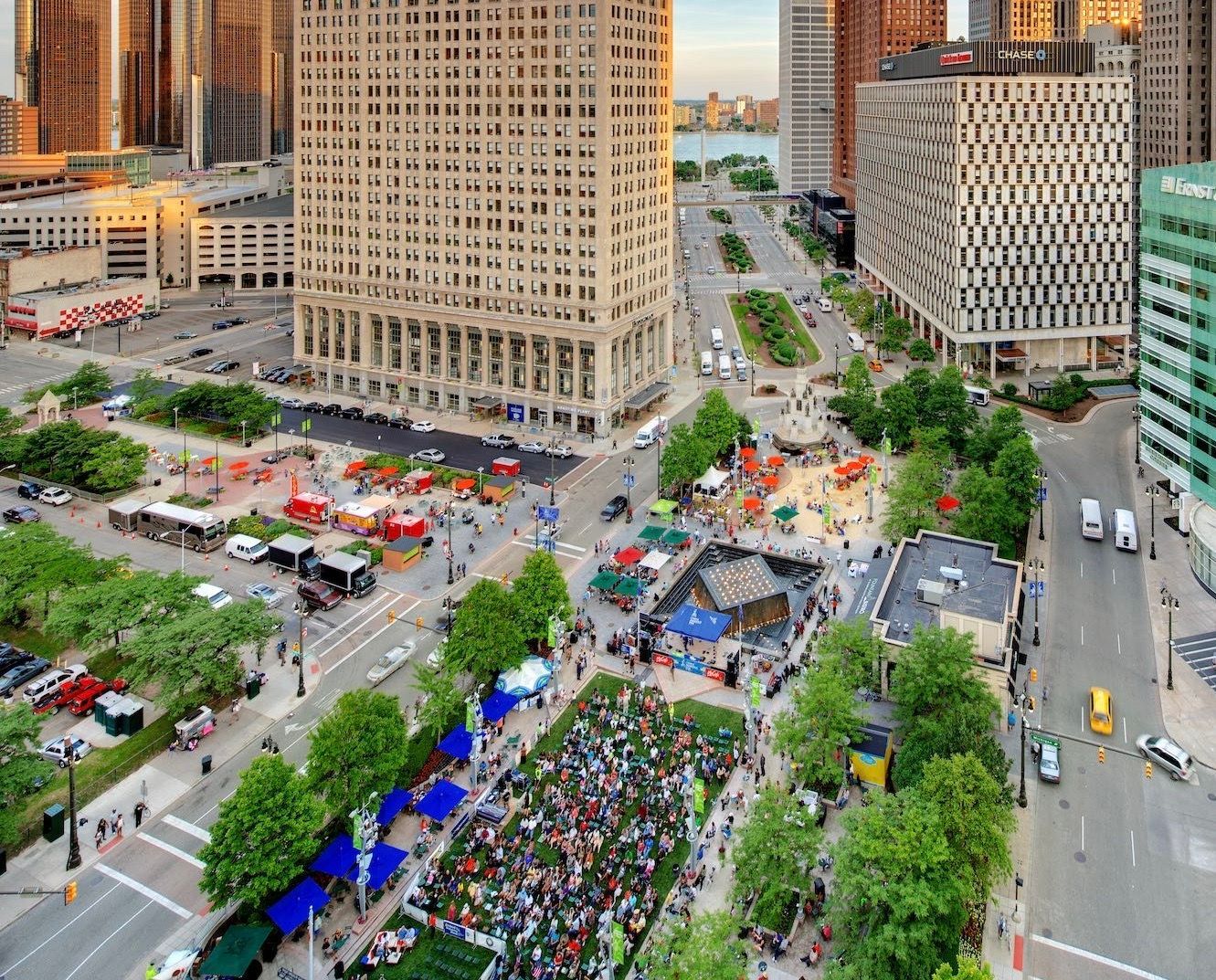

Who We Are
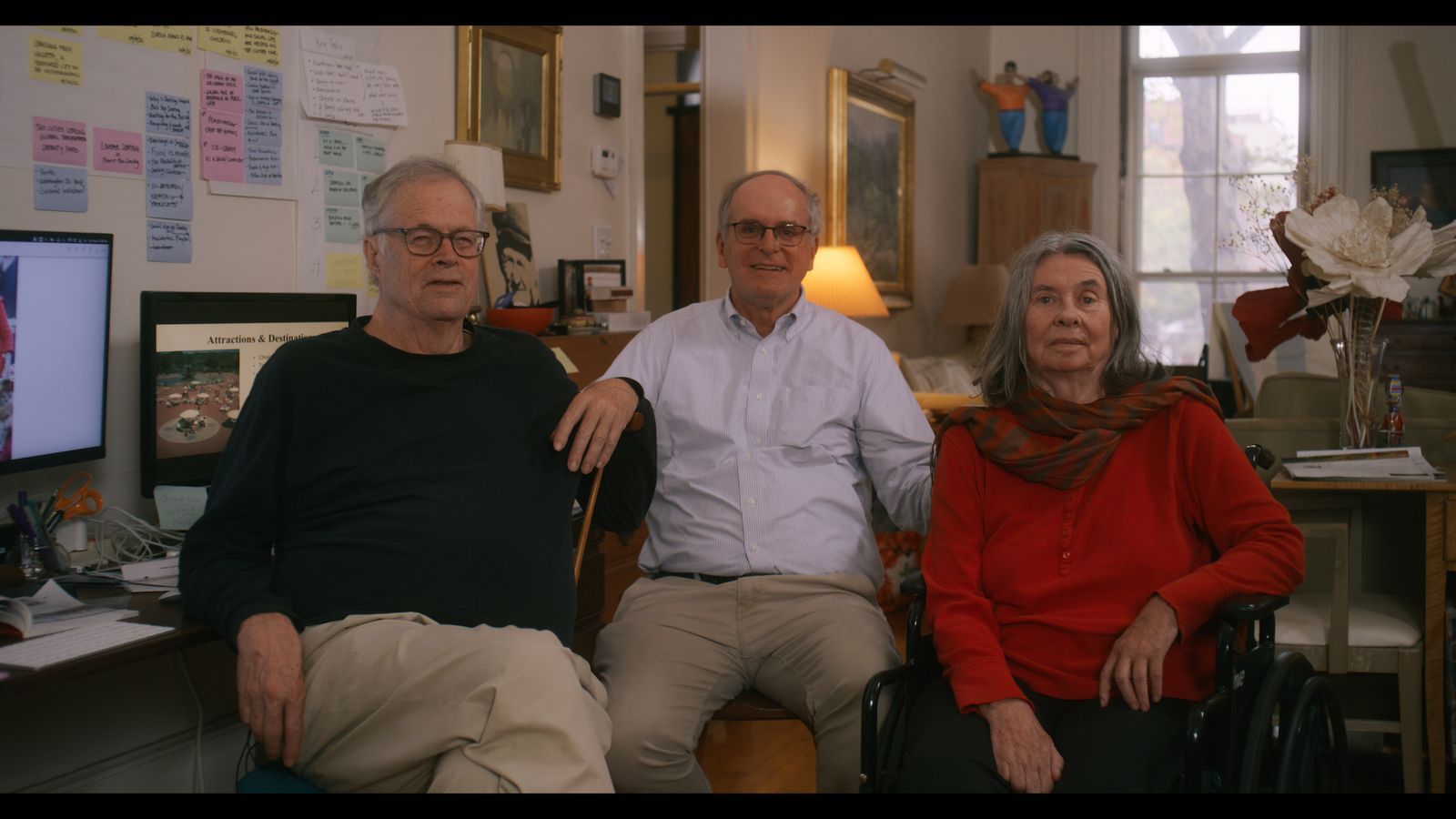
If you are interested in our helping to build a community-wide campaign or catalytic interventions, presentations, exhibits, and more or supporting the cause contact us.

"There are more and more of us fighting for a different vision of the world—a world that takes care of our most precious resources: the air we breathe, the water we drink and the places we share." – Anne Hidalgo, Mayor of Paris, France

